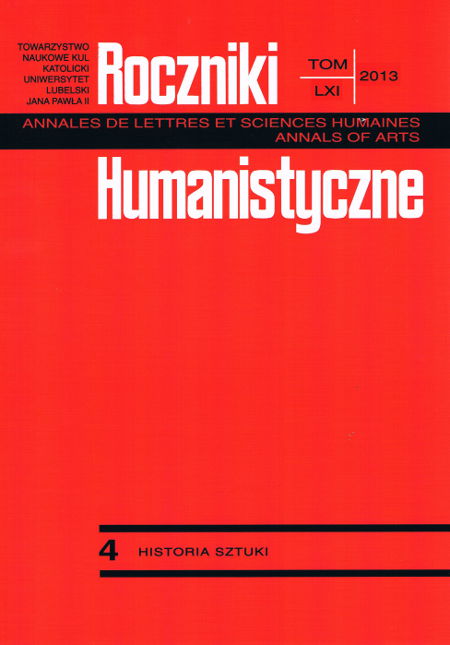Płyta z przedstawieniem Marii z Dzieciątkiem w kościele Świętej Trójcy w Strzelnie
The plaque with the representation of Mary with the Infant in the Holy Trinity Church in Strzelno – „the Stone Icon”
Author(s): Joanna SzczęsnaSubject(s): History of Church(es)
Published by: Towarzystwo Naukowe KUL & Katolicki Uniwersytet Lubelski Jana Pawła II
Keywords: Romanesque Strzelno; stone sculpture; Hodegetria icon
Summary/Abstract: Among the numerous monuments of the Romanesque sculpture surviving in the two post-Norbertine churches in Strzelno, Kujawy, there is a relief, rectangular, sandstone plaque, closed by a semicircle, that used to be called a „votive plaque”. It shows Mary with the Infant Surrounded by the Prophets (105x62 cm). Now it is kept in the Muzeum Roman´skiego Os´rodka Kultury Ottona i Boles awa (Museum of the Romanesque Center of the Culture of Otto and Boles aw) attached to the Holy Trinity Church in Strzelno. The decoration of the plaque is a combination of inspirations coming from the monuments of Western and Eastern art. In the way some of the elements are presented similarity may be seen to other old Strzelno sculptures created by the same workshop of the West European origin (Saxony, Lombardy). On the other hand, the manner of presenting the whole allows counting the Mary with the Infant plaque among the presentations of Hodegetria, and Byzantine ivory plaques reaching West Europe could have provided inspiration for it. Considering their connections with Strzelno, that are becoming ever more certain, Piotr W ostowic and his wife Maria, a Ruthenian princess, were the guiding spirits for this form of the image. This also strengthens the thesis concerning their daughter Beatrycze, who was the first magistra with the Strzelno Norbertine nuns, for whom the convent was built. Under these circumstances the gold sheet icon from Martvilla in Georgia (10th century) may be indicated as a possible source of inspiration for the Strzelno plaque. The presentations of the surrounding prophets are characterized by the same kind of commotion and „nervousness” that can be noticed in the Sages of the Apocalypse on the tympanum of the St Peter Church in Moissac (about 1130), but as far as the style is concerned they are closer to the stocky figures shown by the Lombardy master, Wiligelm. The original function of the plaque is not known. It seems that this representativesymbolical image must have performed a special task: e.g. it was a part of the altar, or a stone relief „imitation” of an alcove with a figure in it, serving as a cult object.
Journal: Roczniki Humanistyczne
- Issue Year: 61/2013
- Issue No: 04
- Page Range: 51-79
- Page Count: 29
- Language: Polish

